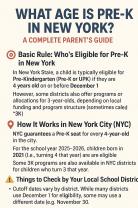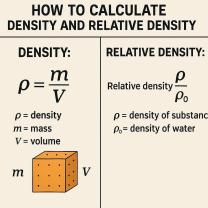How long does it take to complete a fire academy course?
The length of a fire academy course can vary depending on the state, training program, and whether it’s full-time or part-time. Here’s a breakdown of the typical timelines:
Fire Academy Course Duration
Full-Time Fire Academy
Usually 12 to 16 weeks (about 3–4 months).
Students train daily, often in a military-style schedule with long hours.
Part-Time/Evening or Weekend Programs
Can last 6 to 12 months.
Designed for students who are working or studying at the same time.
Basic Firefighter I & II Certification
Combined training is often 400–600 hours total, depending on state requirements.
Specialized Training
Some academies add EMT certification (required in many departments), which may add 2–3 months.
Advanced or specialized fire training can extend the overall timeline.
Key Factors That Affect Duration
State and department requirements (hour minimums differ).
Program type (full-time intensive vs. part-time flexible).
Additional certifications (like EMT, HazMat, or rescue operations).
In short, most recruits complete a fire academy in 3–6 months if full-time, but it may take up to a year in part-time formats.
Here’s a clear comparison table showing the typical timelines for full-time vs. part-time fire academy programs:
| Program Type | Typical Duration | Schedule Style | Notes |
|---|---|---|---|
| Full-Time Fire Academy | 12–16 weeks (3–4 months) | Daily, long hours (often 40+ hrs/week) | Fast-paced, immersive training similar to military boot camp. |
| Part-Time Fire Academy | 6–12 months | Evenings and/or weekends | Flexible for students with jobs or school; same total training hours as full-time. |
| Firefighter I & II Certification | 400–600 hours total | Varies (part of full- or part-time program) | Standard entry-level certification in most states. |
| With EMT Certification | +2–3 months | Often combined with academy | EMT is required by many fire departments, extending overall training. |
| Specialized Training | Varies (weeks–months) | As needed | Includes HazMat, technical rescue, or advanced fire officer courses. |
Summary:
Full-time: Finish in about 3–4 months.
Part-time: Finish in 6–12 months.
With extra certifications, total time may stretch up to a year or more.
Fire Academy: Course Duration, Program Types, and Career Progression
Fire academies are specialized training institutions that prepare individuals to become firefighters. The typical course duration, program types, and post-graduation career paths are common questions for aspiring firefighters. Here is a detailed overview of the fire academy experience:
What is the typical duration of a fire academy course?
The typical duration of a fire academy course ranges from 12 to 24 weeks, with an average of about 16 weeks. However, this can vary significantly depending on the region, state, and specific curriculum. Some programs are more accelerated, completing training in as little as 3 months, while others may extend to 6 months. The ultimate goal is to ensure recruits are equipped with the knowledge, skills, and physical readiness to perform firefighting duties safely and effectively in emergency situations.
What is the difference between a full-time and part-time fire academy program length?
Full-time programs: These are typically intensive, with classes held five days a week, often for eight hours a day or more. Full-time programs are designed for recruits who can dedicate their full attention to training and aim to complete the necessary certifications as quickly as possible. The total duration for a full-time program is usually between 12 and 16 weeks.
Part-time programs: Part-time programs offer more flexibility, catering to individuals who need to balance training with other commitments, such as work or family. Classes are often scheduled in the evenings or on weekends.
As a result, the total duration is much longer, potentially lasting 6 months to over a year. Despite the slower pace, the certifications and skills gained are identical to those from a full-time program.
How many hours a week does a fire academy course require?
A full-time fire academy course typically requires 40 to 50 hours per week. This includes a combination of classroom instruction, physical training, practical drills, and simulated exercises. The curriculum is demanding and challenges a recruit's physical and mental endurance. For part-time programs, the weekly commitment is lower, generally ranging from 10 to 20 hours, but it requires a greater sense of discipline and long-term commitment.
What are the different phases of a fire academy training program?
Fire academy training is generally broken down into several key phases:
Physical Preparation: Many academies include a physical fitness assessment and preparation phase before the formal course begins.
This ensures recruits have the fundamental physical capabilities—including strength, endurance, and cardiovascular health—required for the rigorous training ahead. Theoretical Instruction: This phase takes place primarily in the classroom. Topics covered include fire science, fire behavior, hazardous materials handling, emergency medical services (often leading to an EMT or EMT-B certification), and firefighting laws and regulations. Recruits learn how to properly use equipment and understand different fire types and suppression techniques.
Practical Skills Training: This is the core of the training, where recruits apply theoretical knowledge in hands-on scenarios. This includes:
Firefighting Skills: Hose handling, ladder operations, forcible entry techniques, search and rescue in simulated smoke conditions, and ventilation.
Specialized Training: High-angle and confined-space rescue drills.
Vehicle and Apparatus Operation: Learning to operate and maintain fire engines, ladder trucks, and other specialized apparatus.
Simulated Live-Fire Exercises: Recruits participate in controlled, live-fire drills. These exercises are designed to mimic real-world emergencies, allowing recruits to apply their skills under pressure and develop teamwork and leadership abilities.
What happens after I graduate from a fire academy?
Graduating from a fire academy is a significant milestone, providing recruits with the certifications needed to pursue a career as a firefighter. The next steps typically include:
Obtaining EMT Certification: Many fire departments require firefighters to also be certified as an Emergency Medical Technician (EMT) or a higher-level medical professional to respond to medical emergencies at fire scenes.
Applying to Fire Departments: Graduates can begin applying for positions at municipal, state, or federal fire departments. The hiring process usually involves a written exam, physical ability test, interviews, and a comprehensive background check.
Probationary Period: Once hired, new firefighters typically undergo a probationary period, which can last from several months to a year. During this time, they continue to learn on the job under the guidance of senior firefighters, gaining real-world experience and further developing their skills.
In summary, a fire academy is a critical stepping stone to a firefighting career, with its demanding training and comprehensive curriculum ensuring that graduates are prepared to serve their communities with professionalism and expertise.













